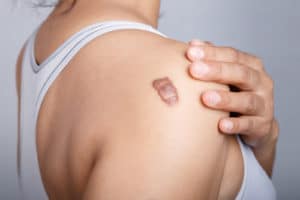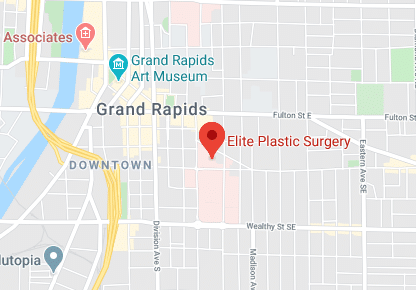
If you have a scar you’d like to see diminished in appearance or maybe if it is affecting movement, the first step is to identify the type of scar. From there, we have surgical options to address the scar.
Keloid scars
Keloid scars are the most common candidates for revision, as they are the most visible. Keloid scars are thick, puckered, itchy clusters of scar tissue that grow beyond the edges of the wound or incision. They are usually red or darker than the skin surrounding them. Keloids occur because the body continues to produce collagen, which is tough and fibrous, after the wound has healed. They are the most common on the shoulders, over the breastbone, and on the earlobes.
For keloid scars, the first option is injecting a steroid directly into the scar. If this doesn’t help, the scar tissue can be cut out and the wound re-sutured. A skin graft is normally used.
Hypertrophic scars
Hypertrophic scars are often confused with keloids because they both tend to be raised, thick, and red. The difference is that hypertrophic scars stay within the boundaries of the original incision or wound. Keloid scars grow outside the boundaries of the initial wound. Steroid applications or injections often improve the appearance of hypertrophic scars.
If those conservative approaches aren’t working, our surgeons will remove excess scar tissue surgically, and they may reposition the incision so that it heals in a less visible pattern. Steroid injections afterwards can prevent a thick scar from reforming.
Contractures
Burns or other injuries resulting in the loss of a large area of skin may form a scar that pulls the edges of the skin together. This is called contracture and it may affect the adjacent muscles and tendons, restricting normal movement.
Correction of a contracture usually involves cutting out the scar and replacing it with a skin graft or a flap. Physical therapy may be needed afterwards to regain full function.
Facial scars
Facial scars, obviously, can be a source of embarrassment. We can improve their appearance usually by cutting out the scar and closing it back with tiny stitches, creating a thinner, less noticeable scar. Or, if the scar is near a natural crease, we may reposition it to align with the crease.
If you’d like to see if our board-certified plastic surgeons at Elite can improve the appearance of a scar, please give us a call at (616) 459-1907 to set up a consultation.



Comments are closed.